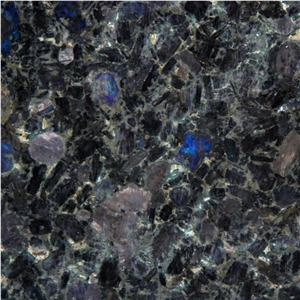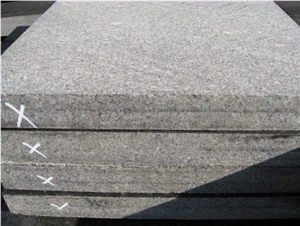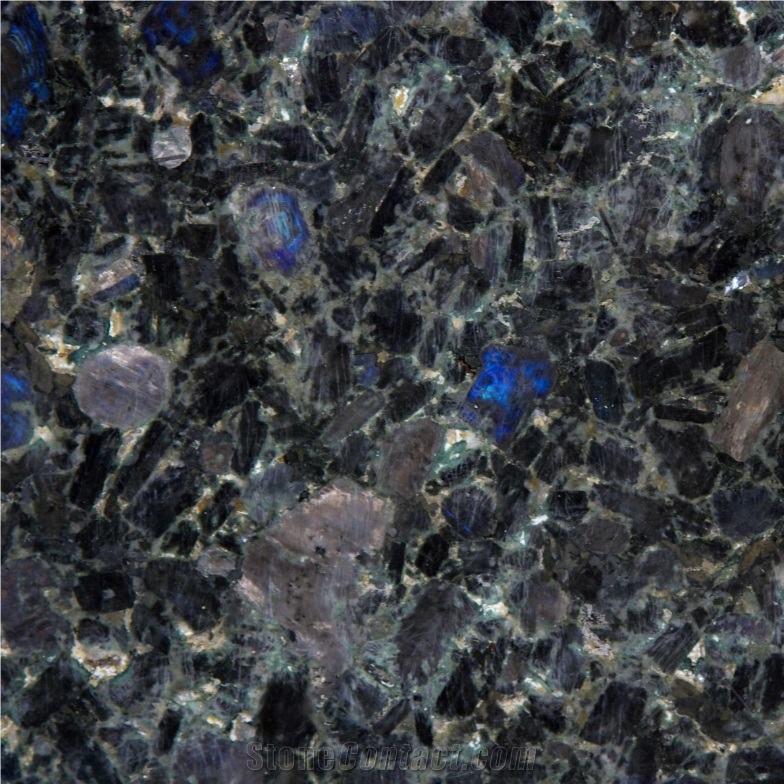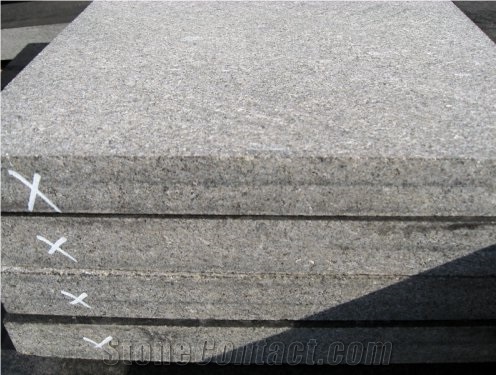Golovinskiy Labradorite
 Ukraine
(Golovinskiy and Turchinskiy deposits in Ukraine)
Ukraine
(Golovinskiy and Turchinskiy deposits in Ukraine)
Acidity: SiO2 45-52%.
Color is usually gray, brown or almost black. But also there are lighter varieties.
Structure is Entirely and uniformly crystalline, coarse-grained.
Texture - solid.
Density 2.7
Bedding form - laccoliths, lopoliths, dikes, stems.
Parting - bedded, parallelepiped
Genesis - intrusive rock formation.
Diagnostics - blue sheen on the faces of the constituent crystals.

Can Ukraine's Golovinskiy Labradorite Granite be used outdoors?

Is Golovinskiy Labradorite a non-toxic material for a cutting board?

Is Ukraine's Golovinskiy Labradorite Granite an expensive stone?

Can I use Golovinskiy Labradorite as outdoor stair treads?

Can Ukraine's Golovinskiy Labradorite Granite be used exterior applications in very windy climates?

Can Ukraine's Golovinskiy Labradorite Granite be used in a office?

What is the coefficient of friction of Chiseled Ukraine's Golovinskiy Labradorite Granite tiles?

How can I clean the stains on Golovinskiy Labradorite?

What is the difference between granite and labradorite?

What should you not use for cleaning Golovinskiy Labradorite countertops?

Are there color variations of Ukraine's Golovinskiy Labradorite Granite?

Is Golovinskiy Labradorite fire-resistant? Can it be used in a fireplace?

Is Golovinskiy Labradorite black or blue?

Does Golovinskiy Labradorite as a tombstone fade in color under the sun?

Can Ukraine's Golovinskiy Labradorite Granite be used in landscaping?

Is Golovinskiy Labradorite mortar and pestle food safe?

What grade is Ukraine's Golovinskiy Labradorite Granite?

What is the physical properties of Golovinskiy Labradorite?
-

-

 Ukraine
Ukraine
 6YRDiamond members are premium members on platform, providing members with comprehensive approach to promoting their products, increasing products exposure and investment return to maximize.
6YRDiamond members are premium members on platform, providing members with comprehensive approach to promoting their products, increasing products exposure and investment return to maximize.
Contact Supplier
-

 Ukraine
Ukraine
 6YRDiamond members are premium members on platform, providing members with comprehensive approach to promoting their products, increasing products exposure and investment return to maximize.
6YRDiamond members are premium members on platform, providing members with comprehensive approach to promoting their products, increasing products exposure and investment return to maximize.
Contact Supplier
-

-

 Ukraine
Ukraine
 6YRDiamond members are premium members on platform, providing members with comprehensive approach to promoting their products, increasing products exposure and investment return to maximize.
6YRDiamond members are premium members on platform, providing members with comprehensive approach to promoting their products, increasing products exposure and investment return to maximize.
Contact Supplier
-

 Ukraine
Ukraine
 6YRDiamond members are premium members on platform, providing members with comprehensive approach to promoting their products, increasing products exposure and investment return to maximize.
6YRDiamond members are premium members on platform, providing members with comprehensive approach to promoting their products, increasing products exposure and investment return to maximize.
Contact Supplier
-

 Ukraine
Ukraine
 6YRDiamond members are premium members on platform, providing members with comprehensive approach to promoting their products, increasing products exposure and investment return to maximize.
6YRDiamond members are premium members on platform, providing members with comprehensive approach to promoting their products, increasing products exposure and investment return to maximize.
Contact Supplier
-

 Ukraine
Ukraine
 6YRDiamond members are premium members on platform, providing members with comprehensive approach to promoting their products, increasing products exposure and investment return to maximize.
6YRDiamond members are premium members on platform, providing members with comprehensive approach to promoting their products, increasing products exposure and investment return to maximize.
Contact Supplier
-

 Ukraine
Ukraine
 6YRDiamond members are premium members on platform, providing members with comprehensive approach to promoting their products, increasing products exposure and investment return to maximize.
6YRDiamond members are premium members on platform, providing members with comprehensive approach to promoting their products, increasing products exposure and investment return to maximize.
Contact Supplier
-

 Ukraine
Ukraine
 6YRDiamond members are premium members on platform, providing members with comprehensive approach to promoting their products, increasing products exposure and investment return to maximize.
6YRDiamond members are premium members on platform, providing members with comprehensive approach to promoting their products, increasing products exposure and investment return to maximize.
Contact Supplier
The request includes: 1. surface finished, size 2. quantity required










 Poland
Poland